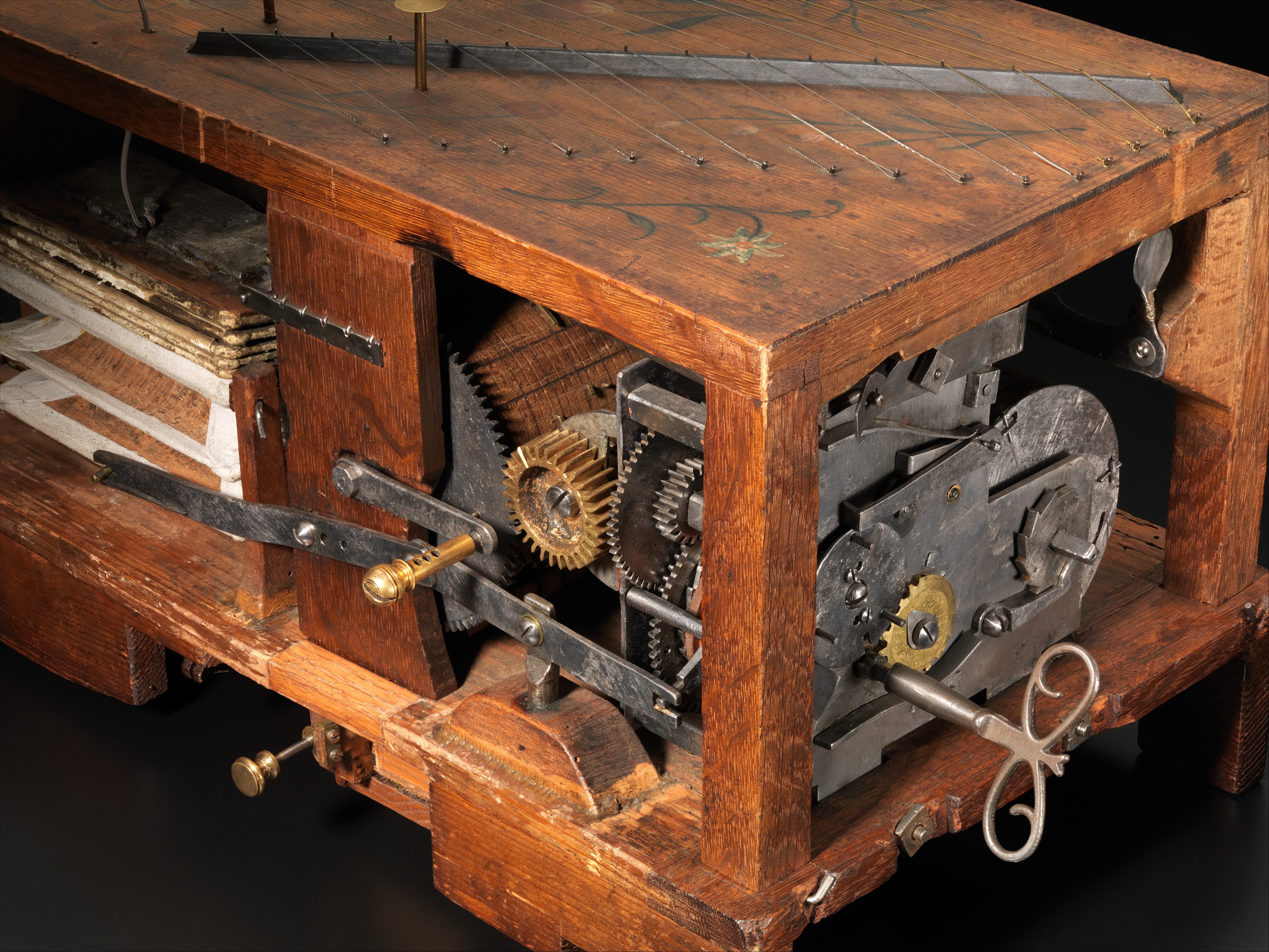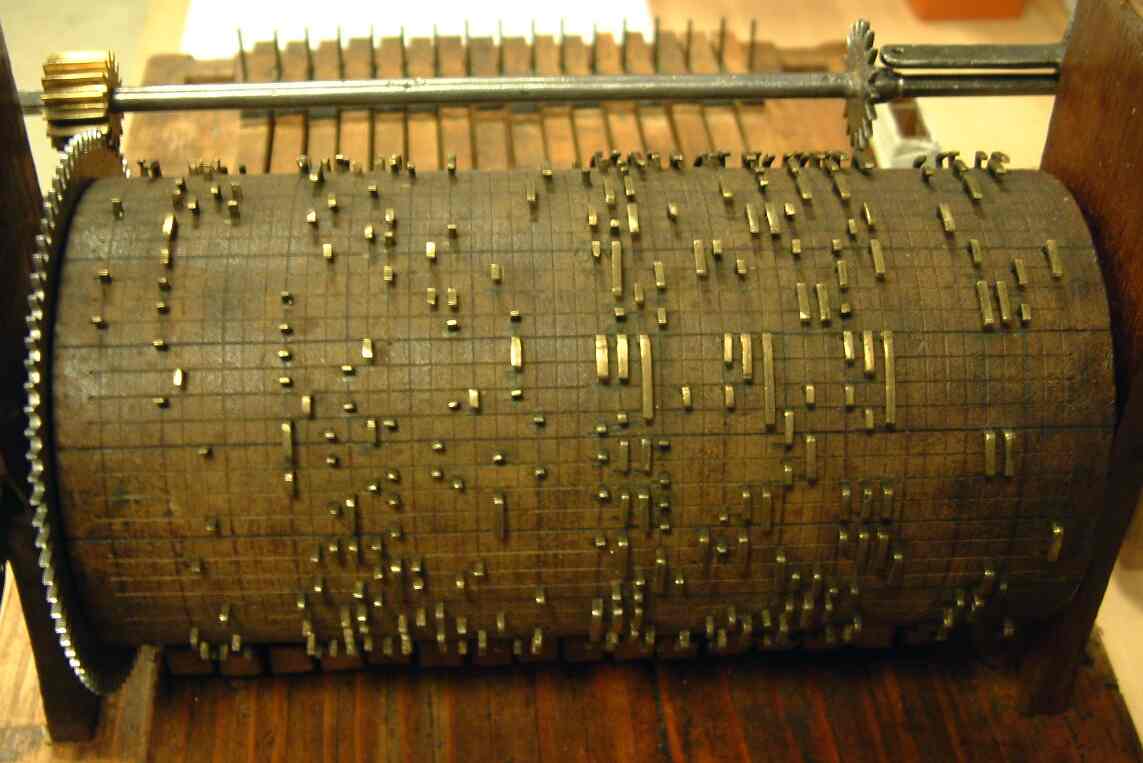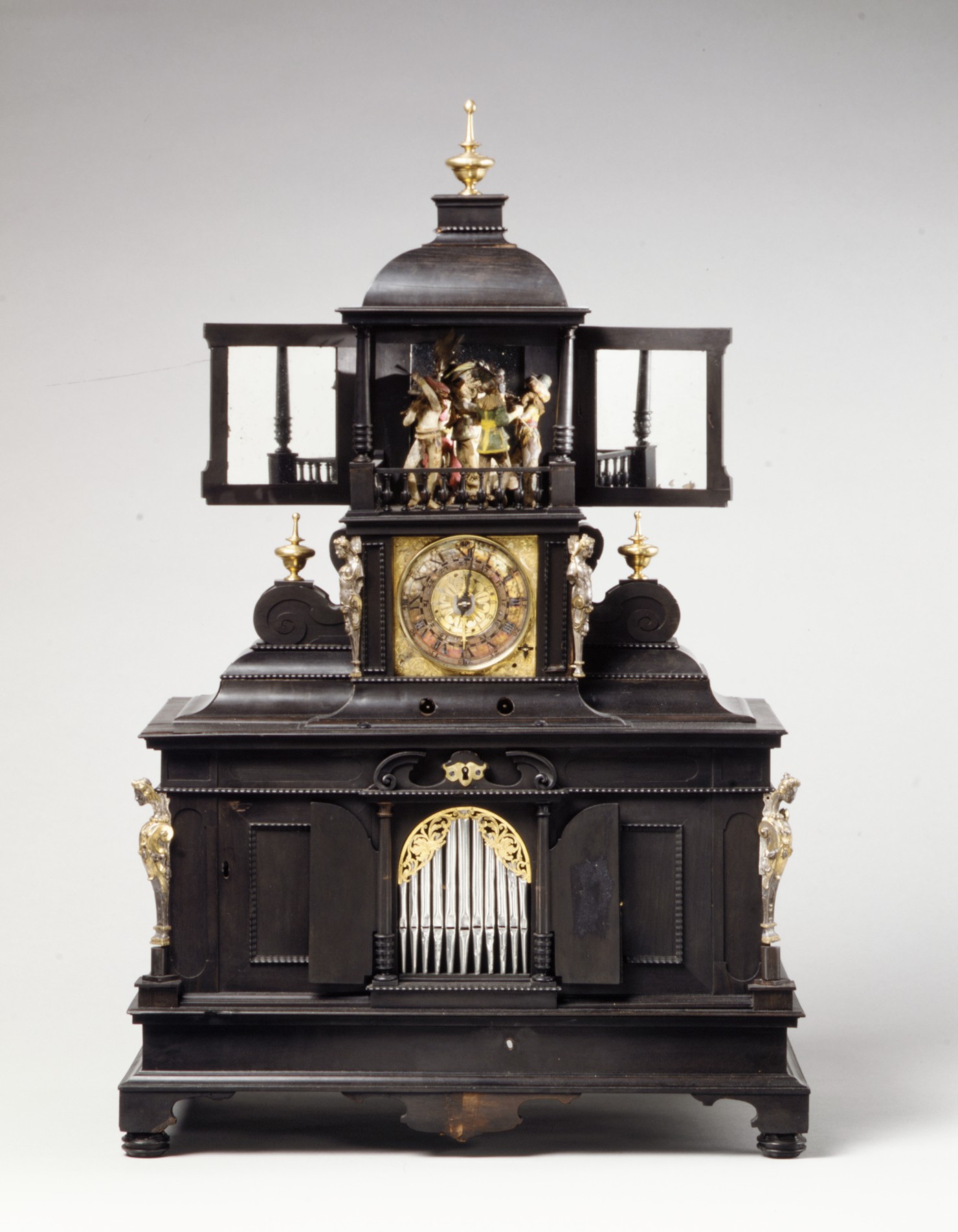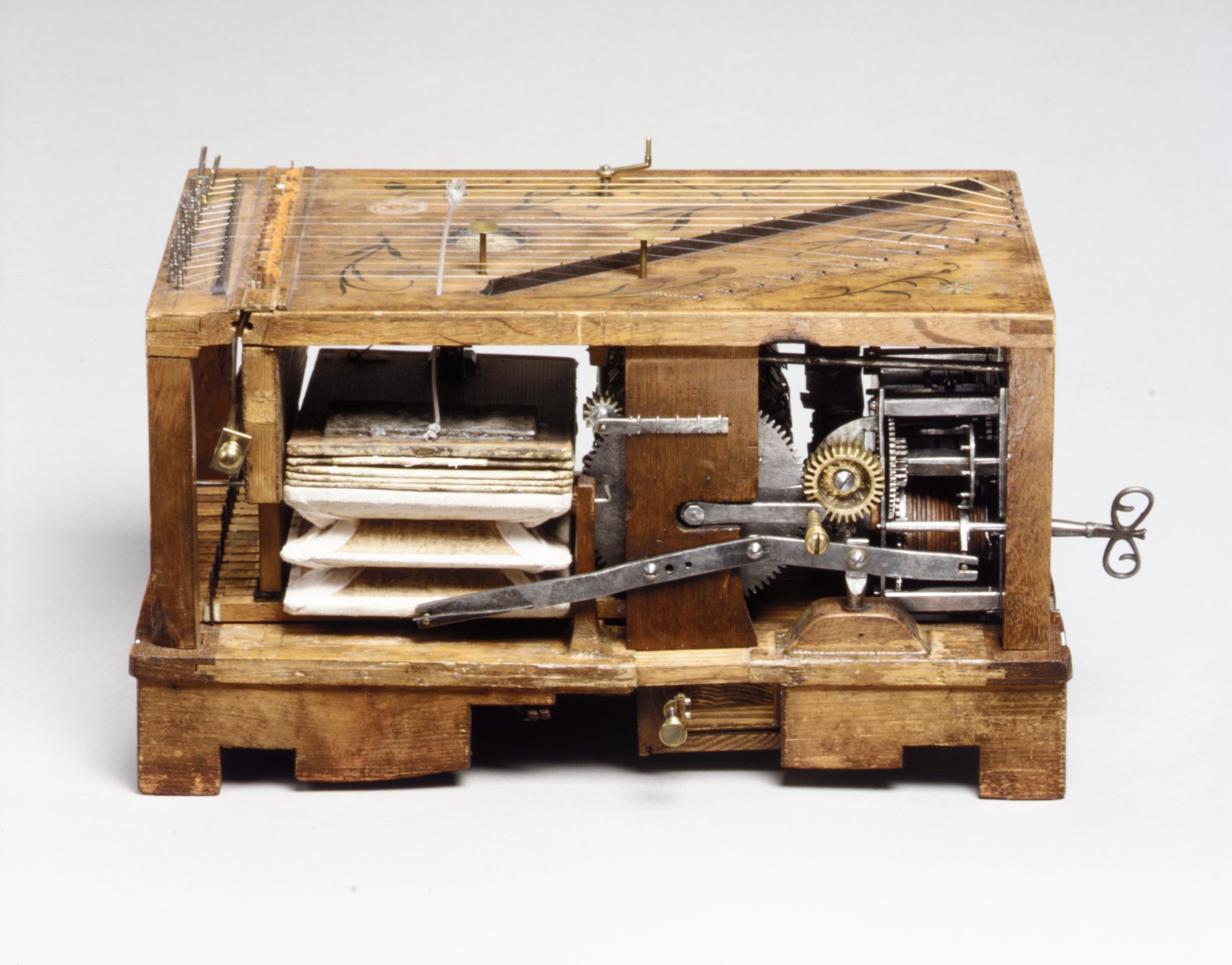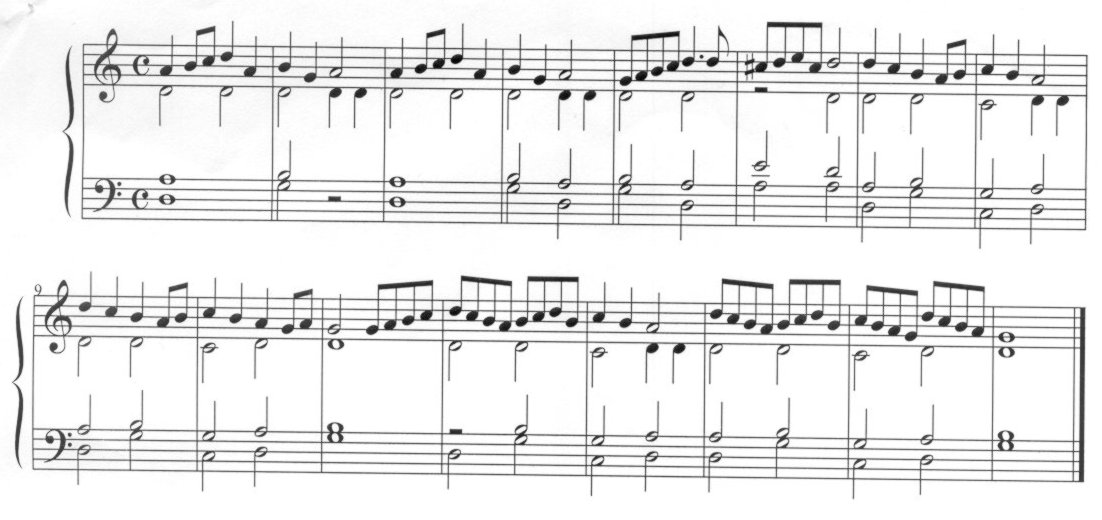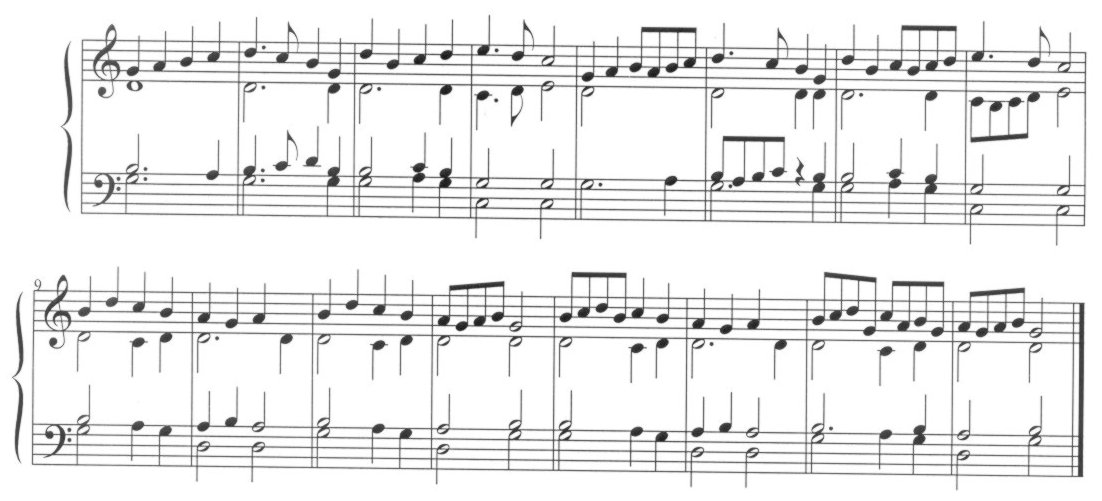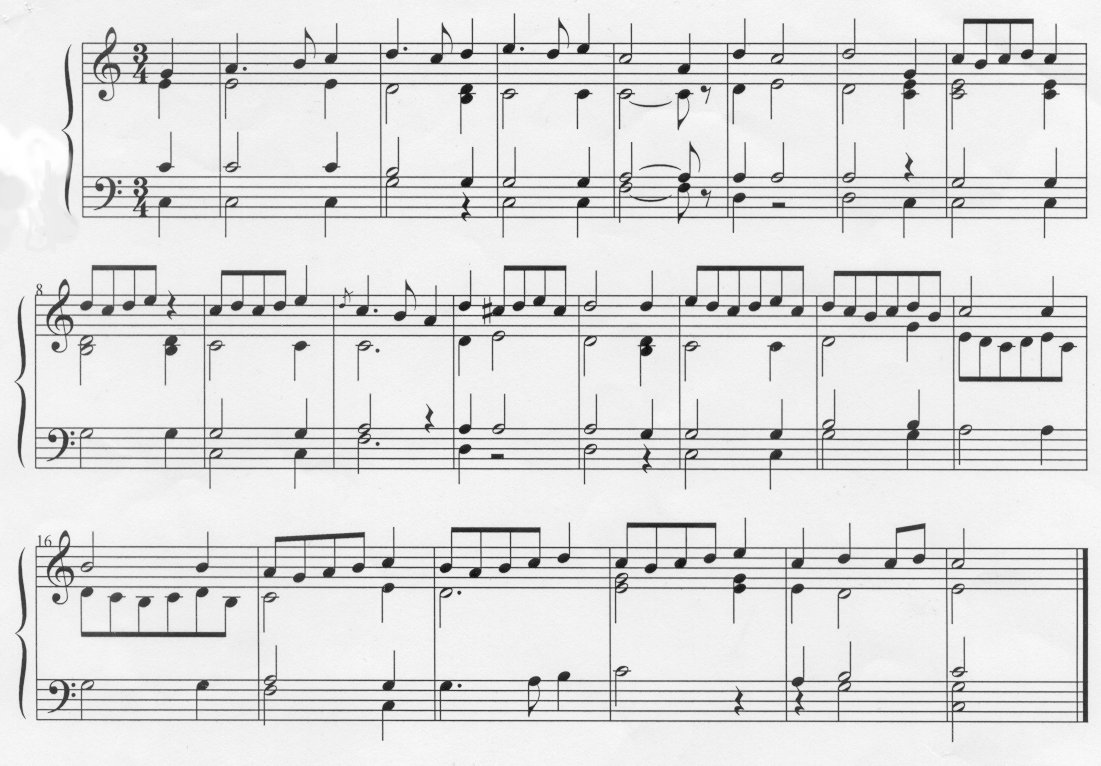Musical Clock with Spinet and Organ
Veit Langenbucher German
Samuel Bidermann German
Inside the ebony case of this musical clock is an extremely rare and important instrument consisting of a sixteen-note pipe organ and a sixteen-string spinet that may be played independently of the organ. Made by the renowned team of Samuel Bidermann and his son (also Samuel)--the father’s L-shaped pinning style appears in this work--and Viet Langenbucher, the extraordinary piece includes, in addition to the organ and spinet, a clock and five carved and colorfully clad commedia dell'arte figures that perform a circling dance in the clock's tower when the instruments sound to mark the hours.
The complex clock is perhaps the most musically elaborate automatic instrument to survive from the early seventeenth century. Its three airs, probably by composer Hans Leo Hassler (baptized 1564-1612), the elder Bidermann's teacher and once keeper of the knowledge of pinning barrels in Augsburg, are stored on the original pinned cylinder. Most cylinders and their tunes were replaced by subsequent generations, but this one was spared to provide us with an extremely rare musical document that allows us to hear the airs as they were played in the seventeenth century.
Technical description: Rectangular ebony cabinet (a) with lower and upper sections; the lower section with centrally positioned doors opening to reveal faux organ pipes partially concealed behind a pierced gilt mask, pillars on a small plinth with ripple molding and a capital with a central brass lock frame, the door is flanked by ripple molded panels, 3 brass knobs (left, center, and right) control the inner workings, and a ripple molding border delineates the upper and lower sections; silver-gilt caryatids appear at the corners of both upper and lower sections; the upper section with further ripple molding is stamped with the Augsburg pinecone and signed EBEN on the flat surface above the lock; the central clock section with caryatids on the corners, flanked by scrolling corbels with turned gilt-brass finials above two secret side drawers (b-c), the whole surmounted by a covered balustrade balcony with mirrored back and side doors enclosing five colorful Commedia dell'Arte musicians (violinist, trumpeter, bell ringer, and triangle player encircle lute player who revolves in the opposite direction) who dance as the music played, domed top with further finial; the central clock with 3¾-inch silver chapter ring with outer minutes and quarters ring enclosing a 1-12 and a 13-24 hours ring with concentric alarm disc, set on a foliate engraved gilt-brass plate with regulation lever in the lower right side, the iron and brass bell striking movement with fusees for both trains with off-set winding and pinned barrel caps; the inscription of a prior repairman under the clock plate: "Michel a Paris, 1866"; removing the cabinet reveals the framework and placement of 16 organ pipes, a 16-string spinet, bellows, cylinder and mechanism for the dancing figures; the framework's top forms the spinet's soundboard containing a parchment rosette and painted with flower sprays, protruding through the soundboard are two plungers to activate the dancing figures, 16 wire strings attach to end-pins at one side cross a bridge and attach to tuning pins at the other end, jacks to pluck the strings are at the tuning pin end; aligned vertically, directly below the tuning pins, are trackers for the organ pipes placed horizontally and taking up ½ of the bottom of the frame and one of the three marks "VLB" appears here, the two other "VLB" stamps (seen from the bottom) appear at the other end under the wood support for the key-wind mechanism; in the center of the frame next to the trackers is the bellows, then a wooden cylinder with brass L-shaped pins and then the hand-forged iron clockwork motor , idler wheel, key insert, etc., (f=mechanism), separate winder key (d) and key to lock cabinet top (e).
#An electronic rendition of one tune
-
An electronic rendition of one tune
-
An electronic rendition of one tune
-
An electronic rendition of one tune.
-
Recorded at the Museum 2019.
Playlist
Due to rights restrictions, this image cannot be enlarged, viewed at full screen, or downloaded.
This artwork is meant to be viewed from right to left. Scroll left to view more.



